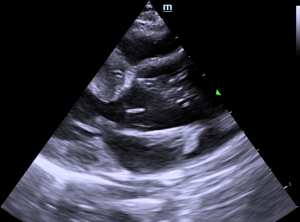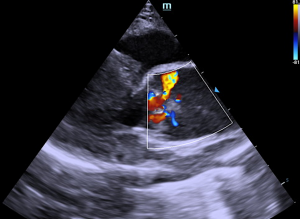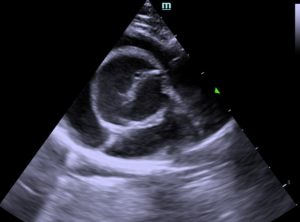"Aortic dissection (AD) is characterized by bleeding within the aortic wall or a tear in the intimal layer of the aortic wall, resulting in the passage of blood from the aortic lumen into the tunica media. In cases of AD, a floating, intimal flap in the aortic lumen divides the lumen into a true portion, with flow present, and a false portion, with no flow." Exerpt from Aortic dissection in four cats: clinopathological correlations. Oricco/Perego/Poggi/Tursi/Biasato/Santilli. Click this link to hear from Dr. Peter Modler on Aortic Dissection via 5 Sono-Minutes with SonoPath.
Shari Reffi, CVT, SDEP® Certified clinical sonographer from our SonoPath Mobile Veterinary Ultrasound team, put her efficient SDEP® skills to the test with this very critical patient. STAT interpretation by Eric Lindquist, DMV, DABVP, Cert. IVUSS.
Outcome
Aortic dissection is a severe consequence to systemic hypertension or underlying disease process. Prognosis is poor. The causes of abdominal evaluation for cause of underlying disease is indicated with search for causes of hypertension. However, prognosis is poor, and this patient is at high risk for sudden death. Thromboembolic episodes may also be playing a role given the increased respiratory effort. EKG is indicated to assess periodic arrhythmia yet was paroxysmal during the exam.




